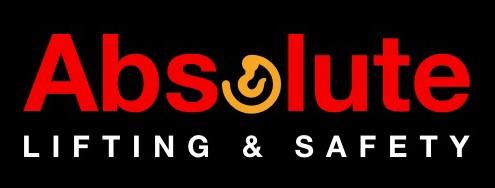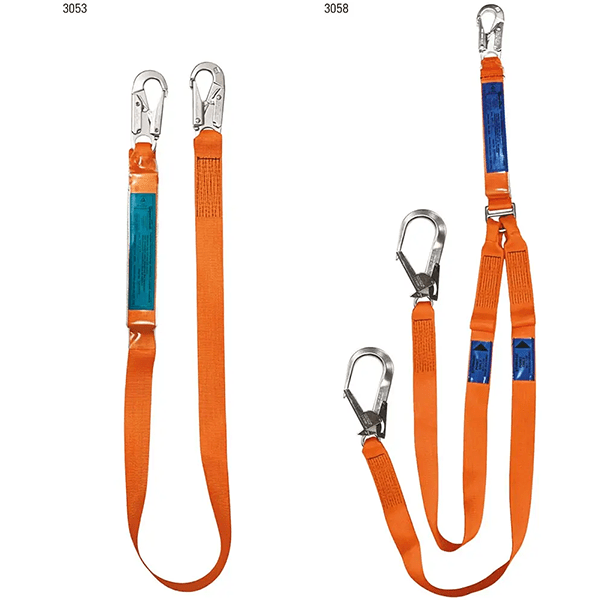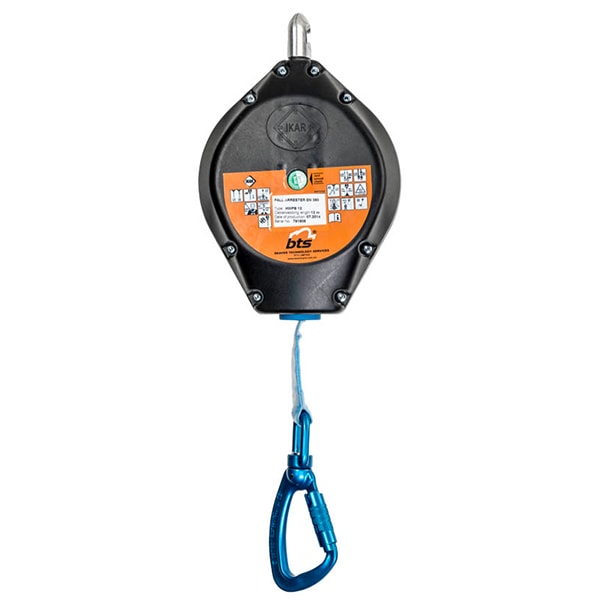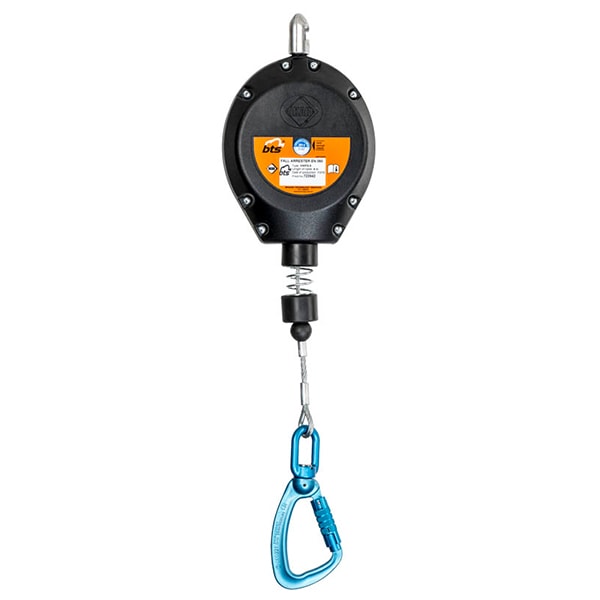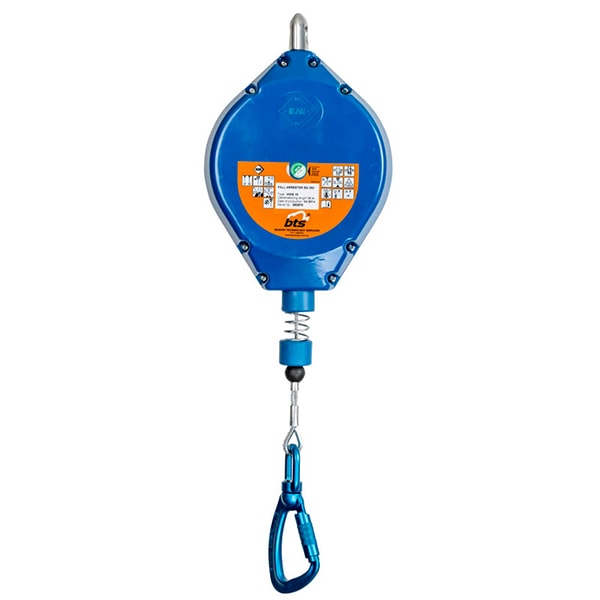The difference between a shock absorbing lanyard and a self-retracting lifeline?
Shock Absorbing Lanyards
Shock absorbing lanyards as per the name absorb shock in the event of a fall, to reduce fall arrest forces on the body. This is achieved as they reduce the rate of fall by tearing internally.
Shock Absorbing Lanyards should be long enough to ensure usability, while remaining as short as possible to minimise free fall distance, with a maximum length of two metres.
Self-Retracting Lifelines
A self-retracting lifeline extends and retract as workers move away from its attached anchor. As a fall arrest device, it has an activate brake system which either stops the fall or fall distance. When a certain level of speed or force is achieved, a locking mechanism engages.
Classified into Class A and Class B SRL’s they provide a maximum distance and an average arresting force.
Class A SRLs are defined as devices that provide a maximum arrest distance of 24” (610mm) and an average arresting force not exceeding 6kN
Class B SRLs are devices that provide a maximum arrest distance of 54” (1372mm) and an average arresting force not exceeding 4kN.
The amount of mobility is limited only by the length of the SRL’s lifeline, which can range from 1.8 to 60 metres, or greater. However compact SRL’s that connect directly to the harness as a lanyard replacement are generally 1.8 metres in length, utilise a shock absorber (personal energy absorber) and are commonly referred to as Personal SRL’s.
Australian Standards
Whether using a shock absorbing lanyard or a self-retracting lifeline, as per AS/NZS 1891.1, AS/NZS 1891.4 & AS/NZS 1891.5 requirements, the fall arrest system must:
- Keep the forces on the human body below 6 kN (600 kg) when using a full-body harness – the force imposed upon the worker the moment the fall arrest system stops the fall.
- Limit the free fall distance to less than 2 metres – free fall is the distance travelled from the point where the worker starts falling to the point where the workers’ fall arrest system begins to slow the worker down.
The shock absorbing lanyard or personal SRL both work to limit the fall arrest forces and minimise the free fall distances to the required levels, however another important factor to consider is fall clearance. Determining fall clearance, the distance from the work area to the ground or obstructions below is a critical safety factor that requires careful consideration in any fall protection system.
Fall Clearance Consideratations, lanyards versus SRL’s
When using a fall arrest system, it is essential to determine if the available fall clearance, the minimum vertical distance a worker needs in the event of a fall, is sufficient to safely arrest the fall and avoid striking the ground or an object below. It is crucial to understand that fall clearance is more than just the simple measurement from a worker to the nearest obstruction. Other factors to consider include deceleration distance, the height of the worker and whether a shock absorbing lanyard or self-retracting lifeline is being used. In fact, a correct calculation could mean the difference between serious injury and a safely arrested fall. If the distance between the anchorage point and the nearest obstruction is less than the calculated fall clearance distance, the fall arrest system cannot effectively protect a worker from the dangers of a fall from height.
